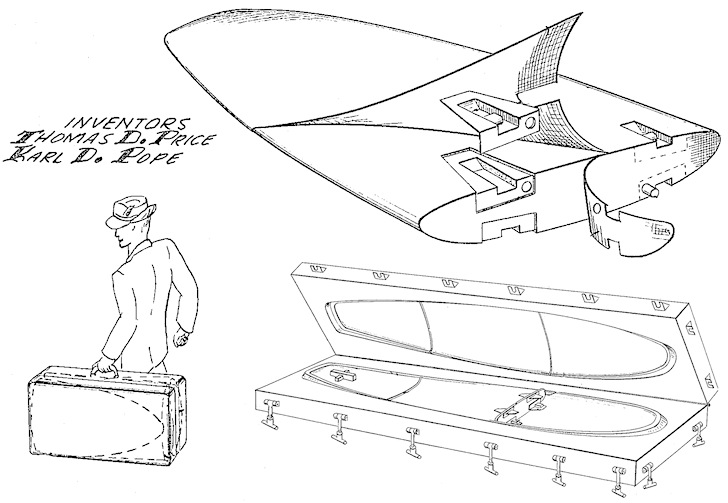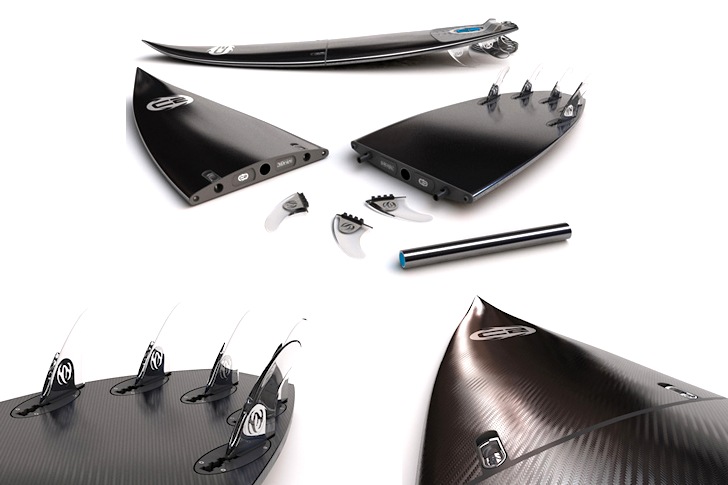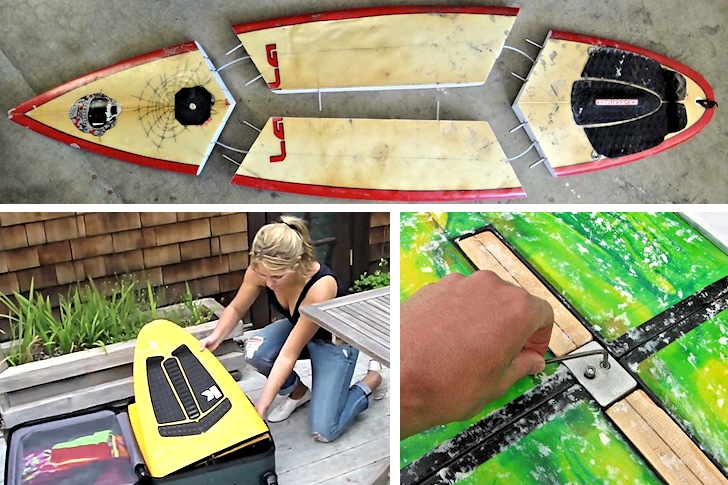Collapsible surfboards, folding surfboards, or travel surfboards. No matter how you name them, they will be very useful if you're a frequent surf traveler.
Yes, they're special. They've not been shaped the classic way, and they serve a different goal.
In a time when it's easier to travel by air, but airline companies are not surfer-friendly, a portable surfboard is always a genius idea.
Think of how Lego and Meccano got popular.
Karl Pope and Thomas Price were the pioneers of portable surfing.
In 1964, they registered the patent for the first-ever collapsible surfboard, "characterized by its simplicity of construction and in its adaptability to economical manufacture."
Pope later developed a commercial version named Bisect.
In 1966, Herman Bank, a JPL engineer, cut a surfboard into two pieces so that it would be easier to transport.
The Multiboard, also known as the "suitcase surfboard," didn't find room in surf shops.

Four Sections Connecting at 60 Degrees
The collapsible surfboard market is still building its structures in the conservative surf industry circuit.
After all, how would you promote a surfboard that can be divided into many pieces?
Two purposes may be sufficiently appealing. Get a surfboard on a car trunk, or get a surfboard on an airplane.
Still not convinced? Why don't you consider it an exotic alternative addition to your quiver? They're light and offer adjustable flex.
Modeling and analysis (Pado, Schiel, Cole, Harvey, and Dragoesi, 2012, University of California) of different cuts and shapes show that the ideal design consists of four sections connecting at 60 degrees.

Futuristic Models
Nicholas Notara designed a black, carbon-fiber collapsible surfboard.
Two pins and a quick-release lever turn this five-fin setup beauty into half its size for easier transportation and storage.
Notara's "C2", a concept model, has never seen the light of day, but it looked good.
Walden Surfboards develops four tri-fold models. The secret lies behind a steel cable, cedarwood, and metal caps. They've been tested in the waves and do their job nicely.
Multiple Exchange Surfboards lets you choose a nose for your board and then a specific tail design. That's it. Board ready.
If you're looking for a custom-built surfboard that breaks into two, three, or four pieces, don't expect high performance. Portability and fun are the main ingredients.
Say goodbye to excess baggage fees.
